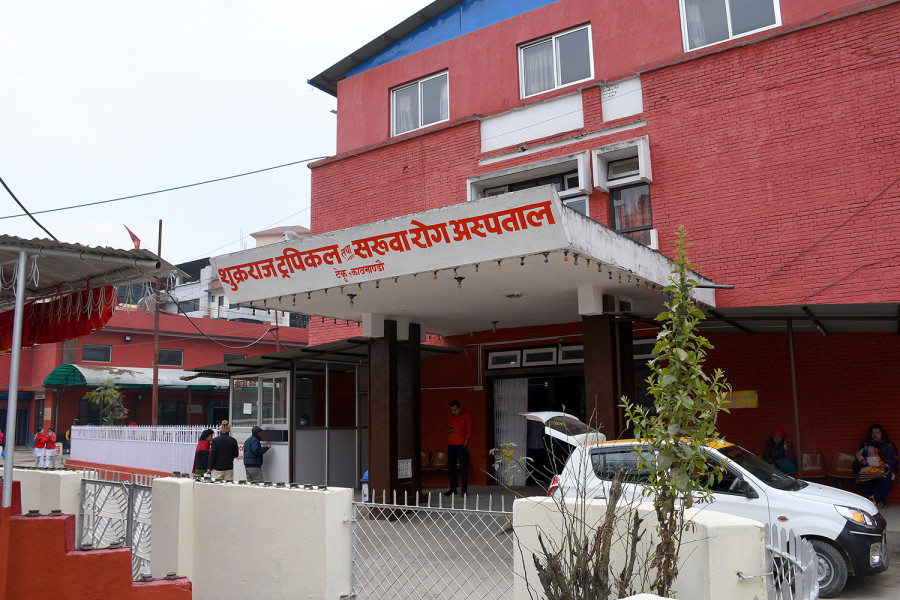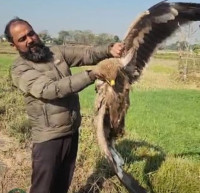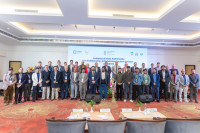National
Test, test, test, says WHO but Nepal has neither the means nor the matter
The number of individuals tested for Covid-19 is far lower than the number of tests as of the 572 tests so far, 175 Nepalis evacuated from Hubei were counted twice.
Arjun Poudel
Sandeep Rai arrived at the Sukraraj Tropical and Infectious Disease Hospital in Teku on Sunday with his colleagues Anuj Adhikari and Habin Bhandari. All three work for Huawei Technologies Nepal, where their supervisor had asked them to take a Covid-19 test as one of their colleagues had been down with fever, sore throat and body aches for the past several days.
Doctors at the hospital measured their temperatures, which was normal, and then sent them home, saying they did not require tests.
“We did not go to the hospital to get temperatures taken. Our office already does that every day," said 32-year-old Rai. “They only asked us to maintain social distance and contact them if something unusual happened. We are worried not only about our health but also the health of our family members.”
This was a common refrain among the many patients who’d arrived at the Sukraraj Hospital seeking a Covid-19 test, at a time when the World Health Organization has consistently urged countries to conduct large-scale testing across populations.
“You cannot fight a fire blindfolded. And we cannot stop this pandemic if we don’t know who is infected,” said Dr Tedros Adhanom Ghebreyesus, director-general of the World Health Organization on March 16.
“We have a simple message for all countries: test, test, test. Test every suspected case,” he emphasised.
But the Nepal government has consistently repeated that there has only been one confirmed case of Covid-19 in Nepal—in January and subsequently cured—without conducting tests. People like Rai, who present symptoms or have been in contact with someone who might have the disease, are being sent home without being tested.
The National Public Health Laboratory, which operates under the Department of Health Services, has been providing numbers every day showing how many tests have been conducted. By Saturday, it had conducted 572 tests so far, of which only the one original case in January had tested positive.
But according to Rajesh Kumar Gupta, spokesperson at the National Public Health Laboratory, the 572 tests do not imply that 572 separate individuals were tested. Nasal and throat swabs from 175 Nepalis evacuated from Hubei Province, the epicentre of the Covid-19, were tested twice—first when they arrived and again before they were released from quarantine.
Going by the laboratory’s own numbers, only 222 individuals at the most, besides the 175 Nepalis from Hubei, had been tested by Saturday. For the Kathmandu Valley, one of the most densely populated metropolitan areas in Asia, these are minimal numbers.
According to public health experts, to not conduct tests, even on those with some symptoms, is to risk the lives of the public at large.
“How can we say that we do not have any cases by testing samples of just over 200 people?” said Dr Baburam Marasini, former director of the Epidemiology and Disease Control Division. “The virus might have spread like wildfire but we wouldn’t know because enough tests haven’t been conducted."
Public sentiment has echoed Marasini’s outrage. Numerous people on social media have called out the government for sticking to the narrative of “just one case” without testing widely. Last week, a video of Dr Sundar Mani Dixit lambasting the lack of testing went viral on social media, displaying just how suspicious the public is of the government’s claims.
Dr Bibek Kumar Lal, who is also a former director of the Epidemiology and Disease Control Division, said that countries like South Korea, Japan, Taiwan, Hong Kong, Singapore have successfully contained Covid-19 by testing as much as possible. At the height of the outbreak in South Korea, the government there was conducting over 10,000 tests a day.
“The number of cases has been rising in the United States as they are now carrying out more tests,” said Lal. “How can we know that we do not have a case here without carrying out tests?"
But laboratory officials themselves are in a bind. Without adequate testing kits, they have been forced to rely on screening measures and only test those who present more than a couple of symptoms.
On March 12, Dr Shrawan Kumar Mishra, joint chief medical technologist at the National Public Health Laboratory, had told the Post that they had requested 5,000 kits from the World Health Organization but it remains unclear whether they have arrived.
Officials at the Health Ministry were reluctant to reveal the exact number of testing kits they possessed, only saying that they had “enough”.
“I cannot tell you the number,” said Dr Bikash Devkota, spokesperson for the Health Ministry. “We know we need to test more so we have decided to operate separate fever clinics to collect more samples. We are also purchasing more kits.”
Officials at the World Health Organization’s Nepal office refused to confirm how many kits they had provided to the government so far.
“We have provided testing kits twice to the government,” said Dr Rajan Rayamajhi, surveillance medical officer at the World Health Organisation. “But I cannot say how many we provided.”
Dr Runa Jha, director of the National Public Health Laboratory, had said last week that her laboratory has around 3,000 kits to carry out coronavirus tests and is in the process of acquiring an additional 8,000.
According to Lal, testing for Covid-19 can now be carried out by using a Gene Xpert machine, which is generally employed to test for tuberculosis. Diagnostics company Cepheid received emergency authorisation on Saturday from the United States’ Food and Drug Administration to use its rapid molecular test using the Gene Xpert machine for point-of-care results. The new method can detect the presence of the coronavirus in 45 minutes.
“We have Gene Xpert machines in most districts, and we can also use the laboratories in medical colleges,” said Lal. "Several aid agencies, including the World Bank, have offered financial and logistical assistance, but we haven’t been taking up their offers.”
But an official at the Health Ministry said that the government is still operating on the protocol prepared when Nepal had a very limited number of testing kits.
“The protocol was prepared to discourage massive testing,” said the official who spoke on condition of anonymity as he feared retribution for speaking out.
With kits incoming from the World Health Organisation and other donors, like Alibaba billionaire Jack Ma, it is time for the government to begin testing in massive numbers, say health experts.
But again, even if the authorities wish to conduct tests, the government’s ability to administer the tests themselves is limited. For instance, if anyone tests positive, then it is necessary to carry out contact testing, which requires much human resource and resources. India deployed 1,000 surveillance staff to trace the people who met Bollywood singer Kanika Kapoor, who tested positive for Covid-19 after her return from the United Kingdom.
According to Dr Basudev Pandey, director of the Epidemiology and Disease Control Division, they have now decided to carry out more tests, including on those who’ve returned from India with a fever. But public health officials fear that it might be too little, too late.
Dr Arjun Karki, a senior internal medicine consultant, said that the government needs to quickly and seriously expand testing if it is to prevent the spread of Covid-19 in the country.
“It will be disastrous if an outbreak happens in a country like ours,” said Karki. “Our healthcare system cannot handle the number of cases that are bound to be seen. We need to take this issue very seriously.”
As of March 22, more than 308, 540 Covid-19 infections have been reported in 188 countries and territories, with more than 13,059 deaths.




 8.12°C Kathmandu
8.12°C Kathmandu















